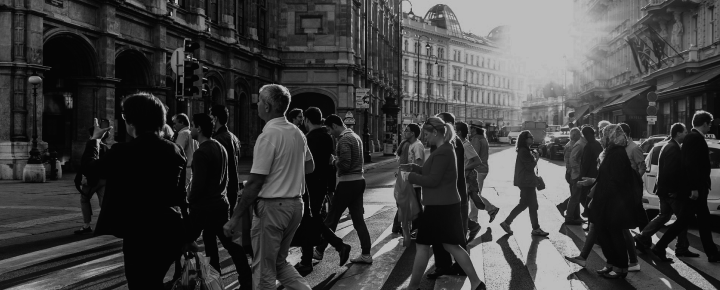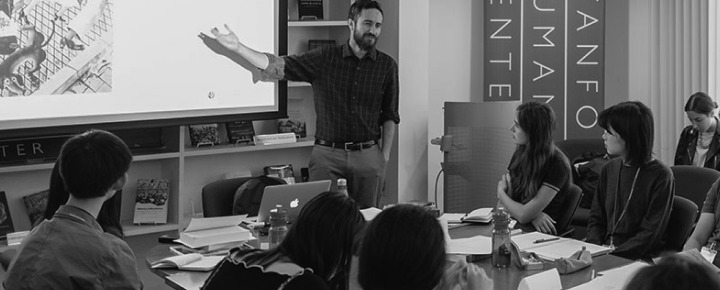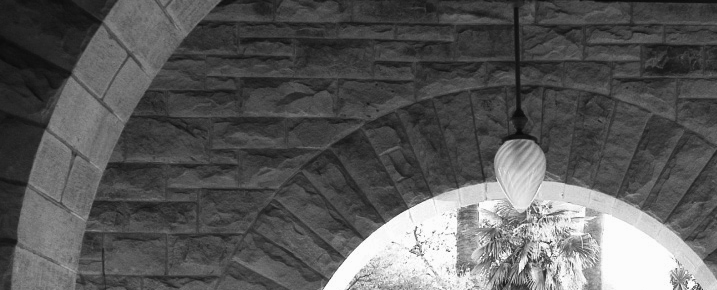
Join the colloquy
Americans in Paris
more
After all everybody, that is, everybody who writes is interested in living inside themselves in order to tell what is inside themselves. That is why writers have to have two countries, the one where they belong and the one in which they live really. The second one is romantic, it is separate from themselves, it is not real but it is really there.
The English Victorians were like that about Italy, the early nineteenth century Americans were like that about Spain, the middle nineteenth century Americans were like that about England, my generation the end of the nineteenth century American generation was like that about France. [1]
Paris France, the memoir in which Gertrude Stein wrote the words above, was released in 1940, just as German forces began to occupy Stein’s adopted city, Paris. The history of this feeling—the feeling that the city of Paris is somehow "not real" yet "really there," and thus uniquely conducive to the arts of representation—intertwines with another history: of war, imperialism, and global circulation. Stein herself would later become well known for hosting American GIs in her Paris home. The preservation of that home (and its valuable art collection), which the ethnically Jewish Stein shared with her ethnically Jewish lesbian partner Alice B. Toklas, through the Nazi occupation would itself become a point of powerful contention and suspicion. [2] Notwithstanding the absinthe-soaked visions of Woody Allen’s Midnight in Paris (2011), there was never a Paris salon where aesthetic autonomy actually meant autonomy from material life or political history.
For what it’s worth, Stein was right about her generation, and not just about the writers. As Nancy Green documents in The Other Americans in Paris, before World War II, the "colony" (as it was somewhat ominously called) of American residents in Paris was the largest in the world. [3] Paris is thus a touchstone for understanding the history of Americans abroad: even its exceptionalism as a place of unique liberation (aesthetic, racial, legal, sexual) echoes and reconfigures the United States’s sense of its own exceptionalism. As Brooke Blower has powerfully argued, Paris was a place where you could go to "become American." [4] Alice Kaplan’s recent triple case study of three American women’s sojourns in Paris—Susan Sontag, Jacqueline Kennedy Onassis, and Angela Y. Davis—points to the extended formative influence of Paris as a place where Americans could get a je ne sais quoi that they could get nowhere else, even as the twentieth century was seen as a period of France’s "Americanization," as work by Richard Kuisel, Kristin Ross, and Victoria de Grazia has shown. [5] Studying Americans in Paris sheds new light on the dynamics of U.S. empire, its interface with French decolonization and neocolonialism, and the formation of a variety of transnational non-state actors.
New and recent work on Americans in Paris treats the "Paris myth" seriously yet critically, bringing the rich theorizations of empire, transnationalism, diaspora, and oceanic studies of the last few decades to bear on erstwhile truisms about the "Lost Generation" and the City of Lights. J. Michelle Coghlan’s "Replotting the Romance of Paris: Americans and the Commune," adapted from her new book Sensational Internationalism, thus draws out Paris’s role as the site of an imagined "frontier of empire" for nineteenth-century Americans, while in "Langston Hughes and the Paris Transfer," T. Denean Sharpley-Whiting foregrounds the texture of life for the African American artists and performers in Paris. [6] Nancy Green, in a lively outtake from her recent monograph, documents how Paris’s reputation as a site of sexual liberation was literalized for Americans seeking a divorce in the 1920s, "When Paris Was Reno."
Yet as Green argues in The Other Americans in Paris, Americans went to Paris not only to gain access to a foreign culture but also to sell an American vision of modernity. As Emily Burns details in "Belatedness, Artlessness, and American Culture in fin-de-siècle France," a posture of perpetual innocence proved perversely fruitful for Americans in the ancient capital. And as Elisa Capdevila argues in "Expatriates ou Ex-Patriotes," the meaning of an American artist’s journey to Paris shifted substantially during the Cold War years of CIA-funded cultural diplomacy and American anticommunist xenophobia. By the end of the twentieth century, multilayered Franco-American remediations are visible in work like John Ashbery’s Tennis Court Oath, as Olivier Brossard explains in the afterword to his French translation of the famously difficult poem, which at times demands "pas une traduction, mais un retour vers l’original" (not a translation but a return to the original).
Paris’s very status as a metropolitan center has also made it a generative site of anticolonial organizing, as Michael Goebel argues in an excerpt from his recent Anti-Imperial Metropolis. [7] Similarly, framing Paris as the "capital of the Black Atlantic," Jeremy Braddock and Jonathan Eburne situate twentieth-century African American expatriates in Paris in relation to other African diasporic networks that found crucial resources and meeting-places in Paris. There is perhaps something perverse in returning to Paris in a moment of transnational studies that has aimed to diminish the metropolitan center’s hold on critical attention. Yet the case of Americans in Paris in particular offers insight into the gravitational interactions between empires, and what Green calls their "élite migration" suggests a prehistory for today’s global cities—New York, London, Singapore, Dubai—and the transnational actors that increasingly dominate the global stage.
Notes
[1] Gertrude Stein, Paris France: Personal Recollections (New York: Liveright, 1970), 2.
[2] See Alan Dershowitz, “Suppressing Ugly Truth for Beautiful Art,” The Huffington Post, May 1, 2012; Barbara Will, Unlikely Collaboration: Gertrude Stein, Bernard Faÿ, and the Vichy Dilemma, Gender and Culture (New York: Columbia University Press, 2011); Janet Malcolm, Two Lives: Gertrude and Alice (New Haven: Yale University Press, 2007); Charles Bernstein, ed., “Gertrude Stein’s War Years: Setting the Record Straight,” in Jacket2, 2012.
[3] Nancy L. Green, The Other Americans in Paris: Businessmen, Countesses, Wayward Youth, 1880-1941 (Chicago: The University of Chicago Press, 2014), 7.
[4] Brooke Lindy Blower, Becoming Americans in Paris: Transatlantic Politics and Culture between the World Wars (New York: Oxford University Press, 2011).
[5] Alice Yaeger Kaplan, Dreaming in French: The Paris Years of Jacqueline Bouvier Kennedy, Susan Sontag, and Angela Davis (Chicago: University of Chicago Press, 2012); Richard F. Kuisel, Seducing the French: The Dilemma of Americanization (Berkeley and Los Angeles, California: University of California Press, 1993); Richard F. Kuisel, The French Way: How France Embraced and Rejected American Values and Power (Princeton, N.J: Princeton University Press, 2012); Kristin Ross, Fast Cars, Clean Bodies: Decolonization and the Reordering of French Culture (Cambridge, Mass: MIT Press, 1995); Andrew Ross and Kristin Ross, eds., Anti-Americanism (New York ; London: New York University Press, 2004); Victoria De Grazia, Irresistible Empire: America’s Advance through Twentieth-Century Europe (Cambridge, Mass: Belknap Press of Harvard University Press, 2005).
[6] J. Michelle Coghlan, Sensational Internationalism (Edinburgh: Edinburgh University Press, 2016). Sharpley-Whiting is the author of the recent CHOICE Outstanding Academic Title Bricktop's Paris: African American Women in Paris between the Two World Wars (Albany: SUNY Press, 2015).
[7] Michael Goebel, Anti-Imperial Metropolis: Interwar Paris and the Seeds of Third World Nationalism. Cambridge: Cambridge University Press, 2015.














